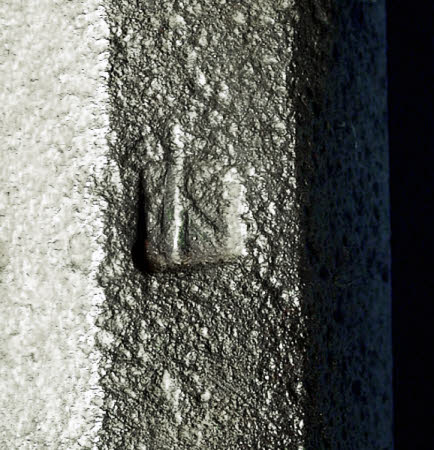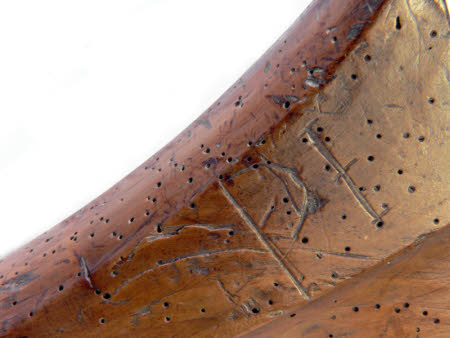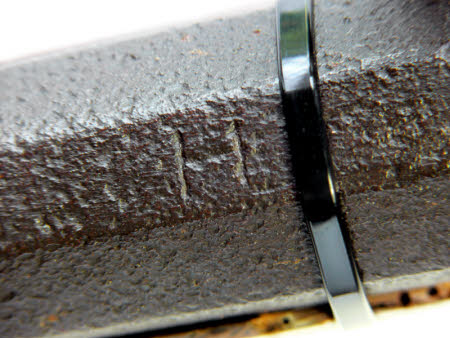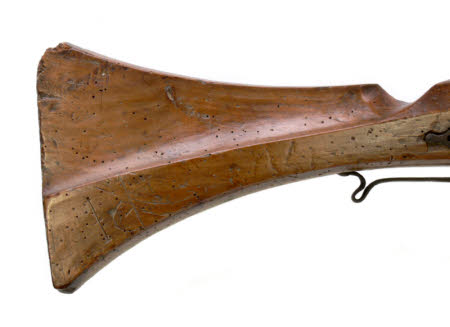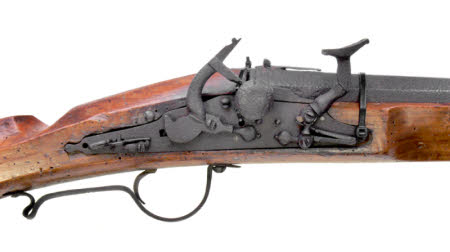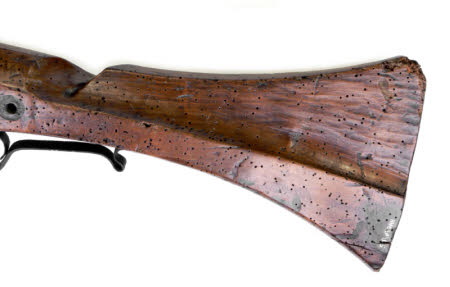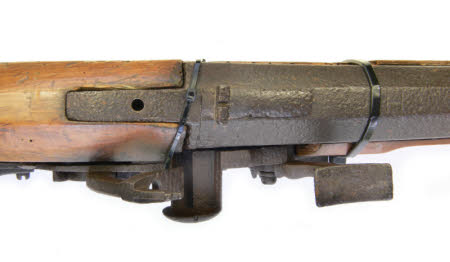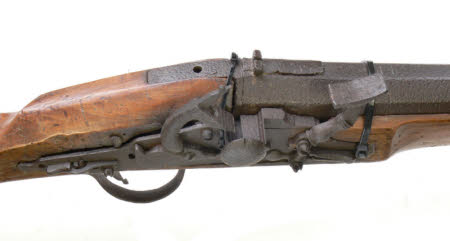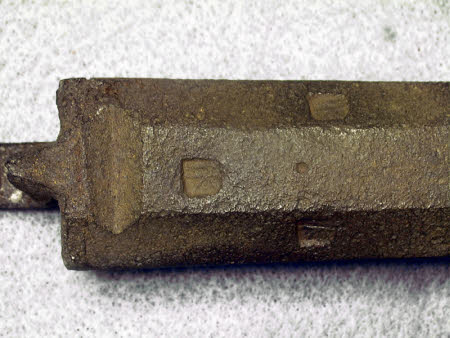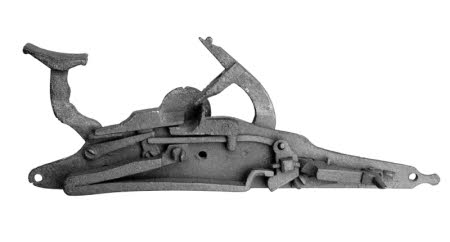Flintlock musket
Category
Arms and armour
Date
circa 1615 - circa 1625
Materials
iron, wood
Measurements
1140 mm (Length)
Order this imageCollection
Hardwick Hall, Derbyshire
NT 1127021
Summary
Very rare English snaphaunce musket, c1615-20, now reduced in length.
Full description
A very rare English snaphaunce musket, c1615 - c1620, now reduced in length. English military firearms from the early 17th century are exceedingly rare, as so very few have survived. The ten muskets at Hardwick are therefore of great importance as four probably date to around 1620. Each musket has the distinctive “fish-tail” butt associated with this period and two have had their mechanisms modernised, probably at the time of the Civil War. The remaining six muskets, together with some detached components, date to the English Civil Wars period of the 1640s. Their association with, and reason for being at Hardwick remains a mystery. By 1600, England had developed and popularised the snaphance, its own form of flintlock. This mechanism would not be surpassed for firing handguns until the 1630s. The mechanism had been used in England since the 1580s, and although confined at first to civilian firearms, it was adopted and used on some military firearms by 1600, as the records of firearms supplied to the Ordnance show. The Hardwick guns have suffered the ravages of time and are in very poor condition. The stocks are badly wormed, large sections of wood are missing and the metal parts heavily corroded with components missing, but nevertheless, the survival of these rare firearms is remarkable. Brian Godwin, “English Firearms from the late 1500s to the English Civil Wars”, Royal Armouries Journal, Vol.10, No.1, Spring 2013, pp.51–70. H.L.Blackmore, British Military Firearms1650-1850, London 1961, p.18 & p.22. The iron barrel, cut down from its original length, formed in 2 stages, octagonal at the breech then to round to the muzzle, the stages separated by 2 bands of mouldings. The breech has a raised rear sight with a long forward finial. The top of the breech is crudely marked with the initial H. The underside of the barrel has 3 shield-like makers marks, each containing a letter (indistinct). Retained to the stock with later iron barrel band. Barrel length 75.3cm Calibre 20mm Wooden stock, the butt of “fish-tail” form with a thin upper comb (part missing) and a deep thumb-groove behind the barrel tang. The right side of the butt crudely carved with the initials RI. The iron trigger guard has an extended finger-piece at the rear. Curved iron trigger. There is no butt-plate. Snaphaunce lock of “classic” English form. The rear of the lockplate with spring activated safety catch. The cock and steel arm of both flat and rounded form. The external buffer and steel-spring with tear-drop shaped finials. The flash-pan with a convex disc-shaped flashguard at its end. Sliding pan-cover. The top-jaw and screw are missing. Internally the components are of standard English snaphance design, with a lever that automatically opens the pan cover on firing. The lock is secured to the stock by 3 side-nails (all missing). Overall length 114.7cm Source/Reference: Brian Godwin, “Early English Firearms at Hardwick Hall”, 16th Park Lane Arms Fair catalogue, London 1999. Brian Godwin, Hardwick Hall – Part 1: Snaphances”, Journal of the Arms & Armour Society, London, Vol.XVII, No.6, September 2003. Brian Godwin, “The English Flintlock: Its Origins and Development”, 20th Park Lane Arms Fair catalogue, London 2003. Brian Godwin, “The English Snaphance Lock”, London Park Lane Arms Fair catalogue, Spring 2006. Brian Godwin, “English Firearms from the late 1500s to the English Civil Wars”, Royal Armouries Journal (Vol.10, No.1, Spring 2013, pp.51–70).
References
Godwin, 2006: Brian Godwin, “The English Snaphance Lock”, London Park Lane Arms Fair catalogue, Spring 2006.
